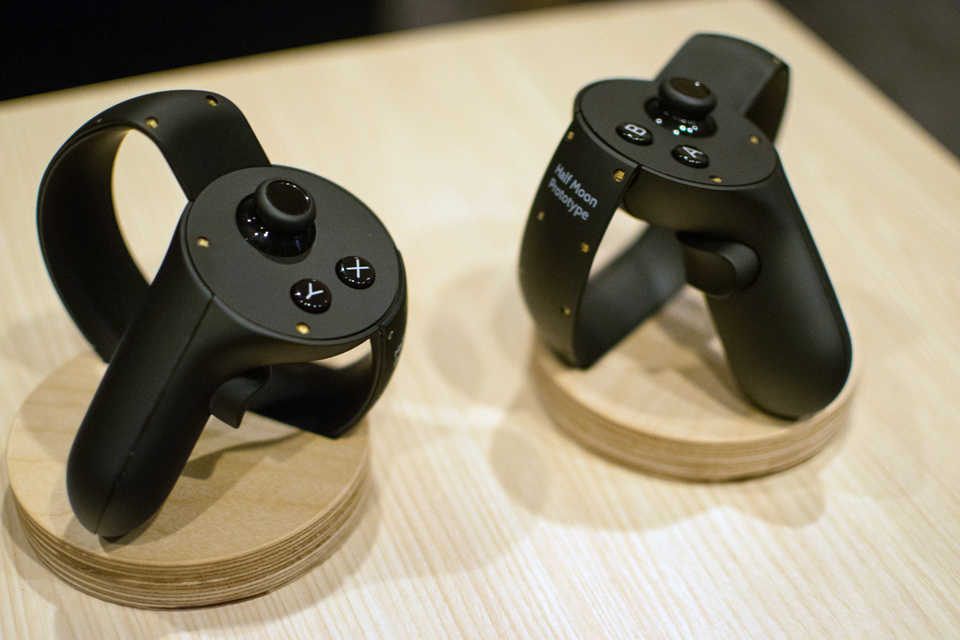The State of Augmented and Virtual Reality Headsets
Vidit Bhargava
For the last few weeks I’ve been reading a Neil Stephenson’s Snow Crash. Snow Crash is based on the premise of a futuristic Metaverse, an internet like platform created for a virtual reality headset. This is something that’s very close to reality at the moment, with Facebook releasing Oculus Rift And Google coming up with their Day Dream VR Headsets, these things are hitting the shelfs sooner than you think, even if they end up providing only a very small glimpse of what the fictional “Metaverse” would look like.

But to me, a VR headset has two major problems: First, if it’s something like the Oculus Rift, at the moment, it needs massive amount computing power and that makes these desk devices. For something that’s ideally portable, being hooked to a desk to use it is unthinkable But this is what most gaming oriented VR devices are going for at the moment.
Secondly, these devices aren’t designed to be wearables. Aesthetic overhauls aside, most of these devices look like intimidating gadgets. You got to strap something to your head and then there’s generally some wire connecting your headset to a computer, or you’d plugin your mobile phone in the front of your device. Either way, they aren’t very inviting, and it’s not just the aesthetics or the materials which would make them wearable, you really need to look at what people wear on their heads and then design these things. If you are making a VR headset, it’s going to compete with sunglasses and prescriptive glasses for the space on your head. Therefore, it should be just as appealing or even more to make people wear your device. but at the moment, the overall of these devices is utilitarian, instead of something that’s accessible to everyone.
Both AR and VR headsets are wearables, and something that you strap in front of your eyes, this means that they’ll be competing against Goggles and Presprective Glasses, and one of the key factors that people wear them is the fact they “Look” great. There’s a great variety of them available and they solve a specific purpose. Something that doesn’t look like a computer strapped to your forehead would be a great starting point for any of these gadgets to be accepted as being wearable. An ideal AR/VR Headset would be more Rayban Aviator than HTC Vive.
An ideal AR/VR Headset would be more Rayban Aviator than HTC Vive.

Take the Snapchat Spectacles for example. They are great unitasking wearables which don’t look like intimidating gadgets, they look like what normal specs would look but with a camera which allows you to publish stories on Snapchat. It’s a gadget that fits right in to the space for sunglasses but is equally well integrated with your mobile phone to solve a purpose, albeit a small one. In my opinion, by embracing the wearable and sunglasses market, Snapchat is taking an important step to making these video recording spectacles feel more at home to the users. It’ll be interesting to see how popular these devices become.
The biggest capabilities of a VR Headset revolve around the fact that you can have different environments to explore. That exploration could either be gamified, or play out as an interactive story where your actions influence the plot, it could provide a tourist like experience, visiting different places from the real world without actually being there. The idea that you can be in any environment is what is really exciting!
Having said that, Virtual Reality headsets, because of their nature to produce different environments, render themselves as temporary recreational devices. It’s hard to imagine giving up their real lives for a 24×7 virtual world experience, and something that hardly anyone would recommend either. Yes, the VR headset eyes for a space on your face, but it’s only eyeing that for a limited amount of time.
VR headsets have a great potential to be the next form of escapist entertainment devices.
Augmented Reality on the other hand is the less ambitious cousin of Virtual Reality. It’s not eyeing to replace your environment, but change or alter it in ways that enhance your everyday experience. It’s less Ambitious, but only on surface. Augmented Reality can have an entirely different set of applications to VR, and all of them equally game changing.

In fact, we’ve seen some of these appear on mobile phones, ever since the advent of Apps. In the initial days of the App Store, Word Lens was an app that would change the signs and labels around you and translate them to your preferred language. Something that’s a must have for any traveller. More Recently, ofcourse we’ve seen Augmented Reality land in games like Pokemon Go.
You could wear an AR Headset all day, and there’d be times when the tech would just be out of the way, and there’d be times when it’d help you. A great AR experience would be one that seamlessly fades into and out of your life.
But the applications for Augmented Reality go far beyond that. Technically Augmented Reality could change your surroundings to benefit you. Just look at some of the Microsoft Hololens demos and you realize the potential of even partially changing different environments around you. In fact, AR has both Medical and Educational Benefits. With an AR Headset, you could leverage the surfaces from the real world to provide interesting interaction opportunities.
The software for these devices can take advantage of the surface around us. I mean, do we really need the paradigm for sheets and layers anymore? When we manipulate the surfaces around us to accomplish tasks more intuitively. Take the example of a chatting application. Do we need Speech Bubbles or video frames when we can have their 3D Projection talk to us?

Moreover, there are interesting software applications that one can think of which wouldn’t have been possible before. So, you could be in a low lighting environment but the augmented reality headset you are wearing could enhance that by augmenting the lightning around you. Or something like Word Lens, which would just be apt for an AR Headset. This is a platform which could really take advantage of the third party applications.
You could ‘theoretically’ use An Augmented Reality Headset to enhance the surrounding around you, or even go as far as dynamically correcting your vision. Making Prescriptive glasses obsolete.
One interesting application to Augmented Reality can actually be about prescriptive glasses. As these devices gain popularity, it’ll be interesting to see as to how they adjust for people wearing prescriptive glasses. The current approach is to allow wearing these devices over specs. This is just weird. A more compelling solution to this problem would be to augment the reality in front of our eyes in such a way that what we see is the corrected vision. One could theoretically generate the depth that would be needed to correct a person’s vision. Moreover, this will be a big improvement for those wearing bifocal and multi focal lenses. But this is all wishful thinking at the moment, i’m not even sure if such a technology exists at the moment, let alone be product ready!

Another interesting aspect of these devices is going to be how the software is controlled. The current idea is to provide users with Playstation Move like controllers which sense the hand movement or provide a set of controls to manipulate the environment in front of us. But this is both inelegant and non intuitive. If these devices are simulating real life like situation, being able to use hand gestures for different use cases would be key, in fact, one could go beyond hand gestures in certain situations and track body movement as well.
To be honest though, while both Augmented Reality and Virtual Reality devices have interesting applications and hurdles to cross It’s going to be interesting to see which of these actually becomes popular with the people remains to be seen. To me though, it looks like, VR Headsets would eventually occupy a much shorter time in our lives, much like Gaming Consoles and TV sets and other escapist forms of entertainment have. On the other hand, AR Seems to be something that one could theoretically wear at all times and increase their productivity. In the end, It all boils down to what kind of user problems these products solve, and will the users be comfortable wearing and using them over and over again.
